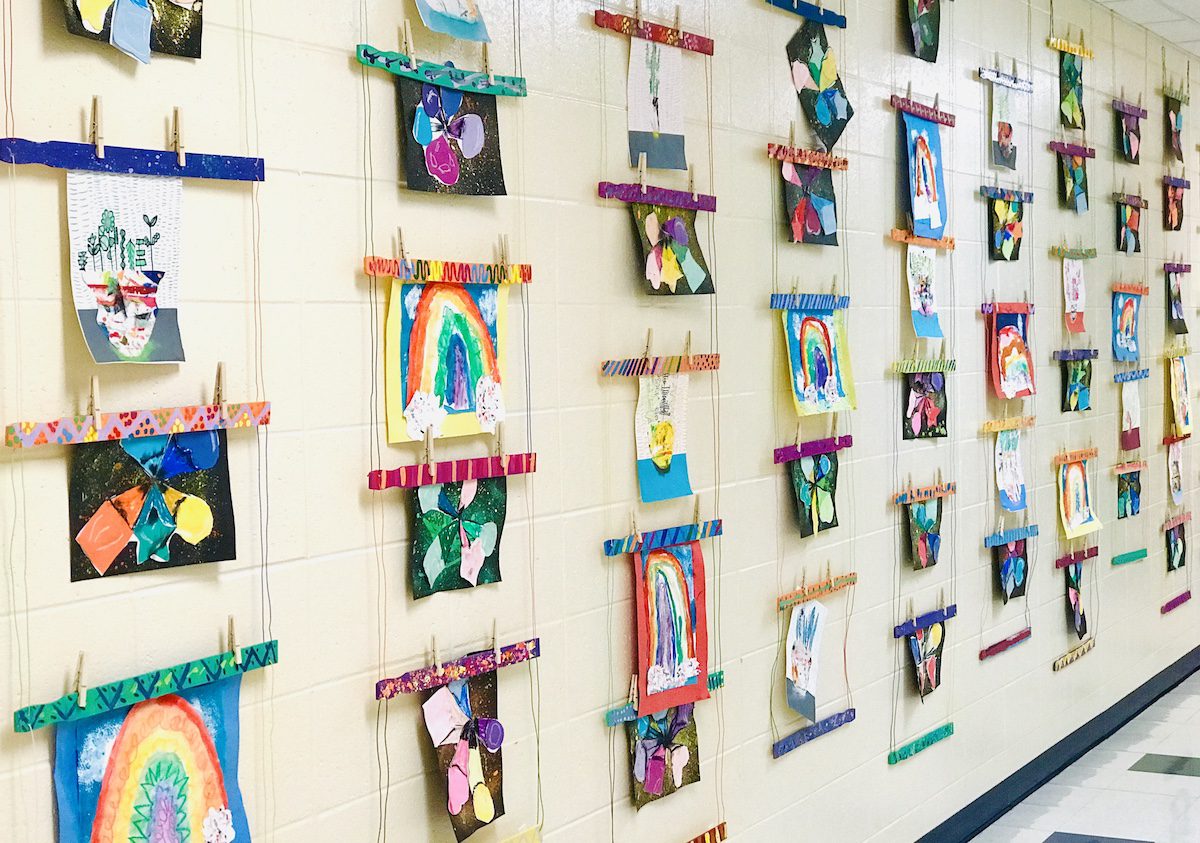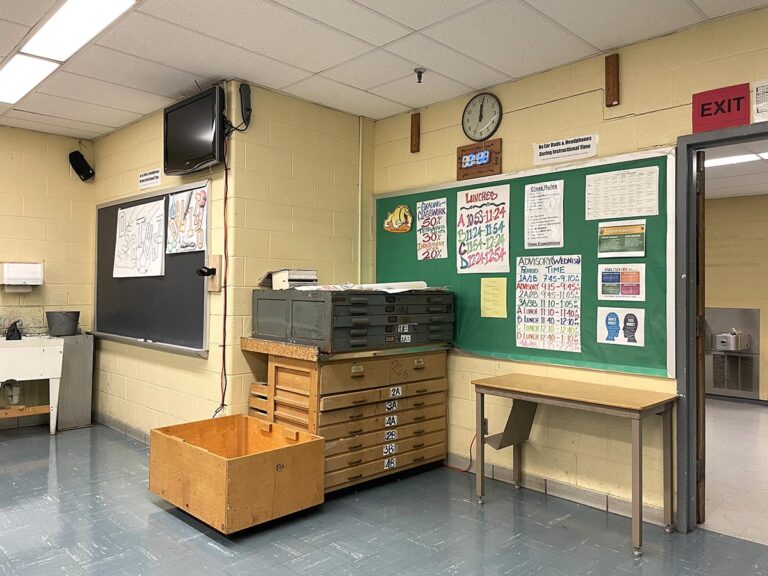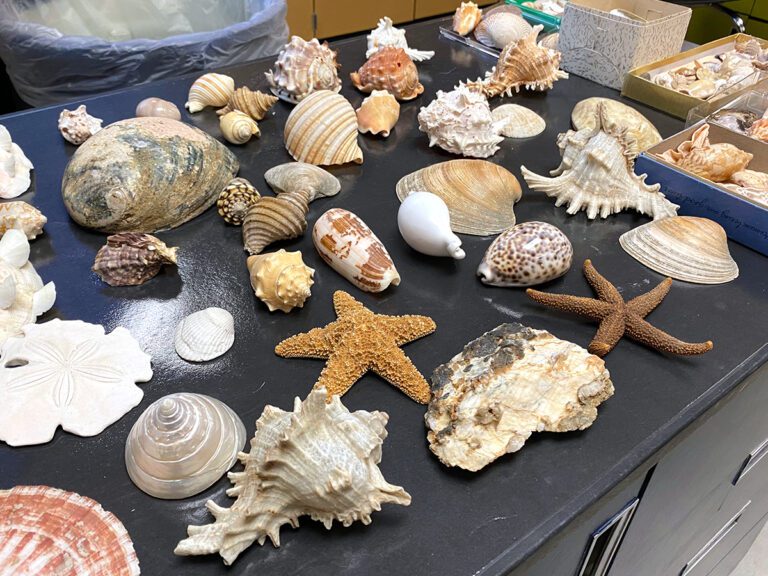Is your school covered in pesky cinder block walls? Not only are cinder block walls cold and unwelcoming, but they are also very difficult for displaying artwork. Tape doesn’t stick, artwork falls off constantly, and it is time-consuming to display something that will eventually end up falling onto the floor.
Do not fear. With a little DIY inventiveness, any of these ways to display art on cinder block walls will surely do the trick.
Here are 3 ways you can display artwork on cinderblock:
1. Hanging Ladders
This system of hanging painted ladders will make your school walls look beautiful even if there is no art displayed. When I was installing this system in the hallway, many teachers passed and said, “Wow, beautiful!” to which I replied, “Just wait till there is art displayed on it!”
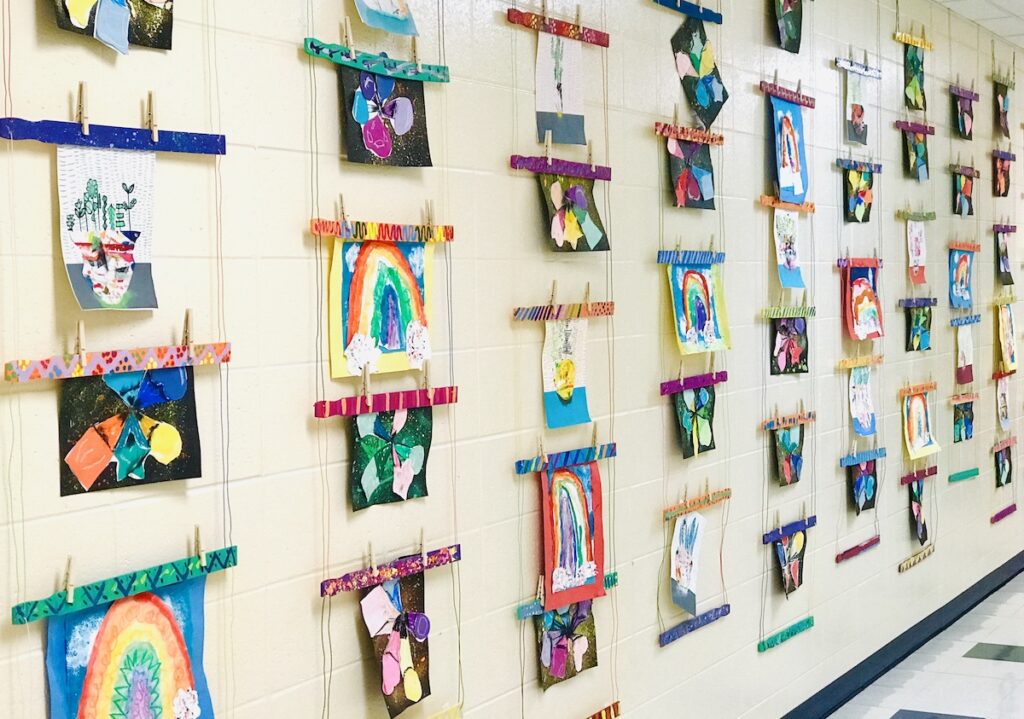
What you will need:
- Large paint sticks (ask your local hardware store for donations)
- Paint
- Wire
- Drill
- Paper clips
- Clothespins
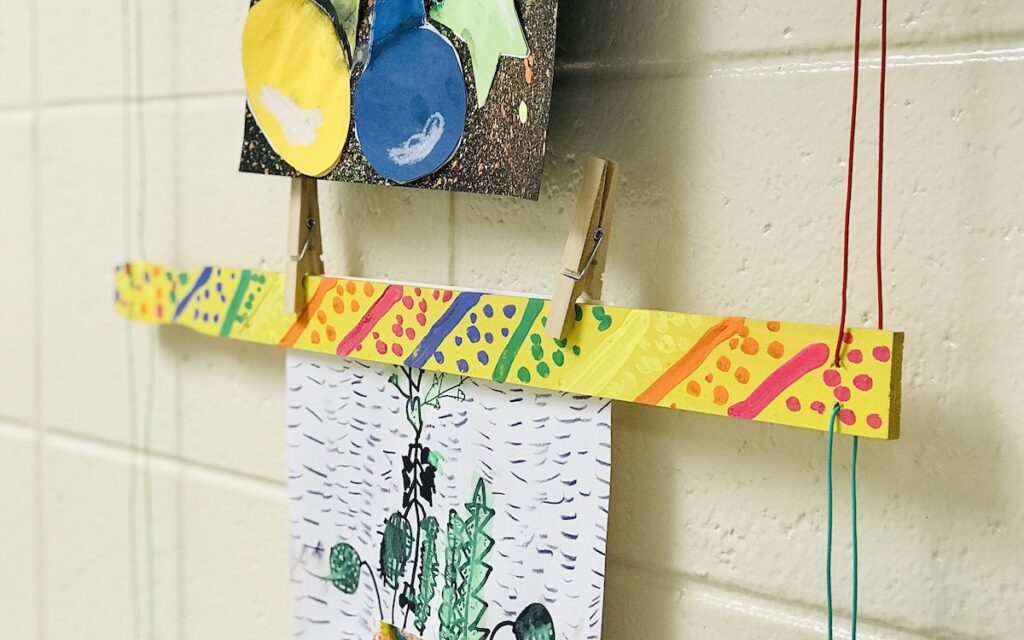
Do It Yourself:
To assemble this display, start by painting large paint sticks. Once you have a collection of colorful sticks, drill two holes on both ends of the sticks. Loop wire into the drilled holes and connect a ladder of paint sticks, leaving enough space for artwork to be clipped in between. Once ladders are assembled, use paper clips to attach to drop ceilings and secure the bottom paint stick to the wall to avoid unwanted movement.
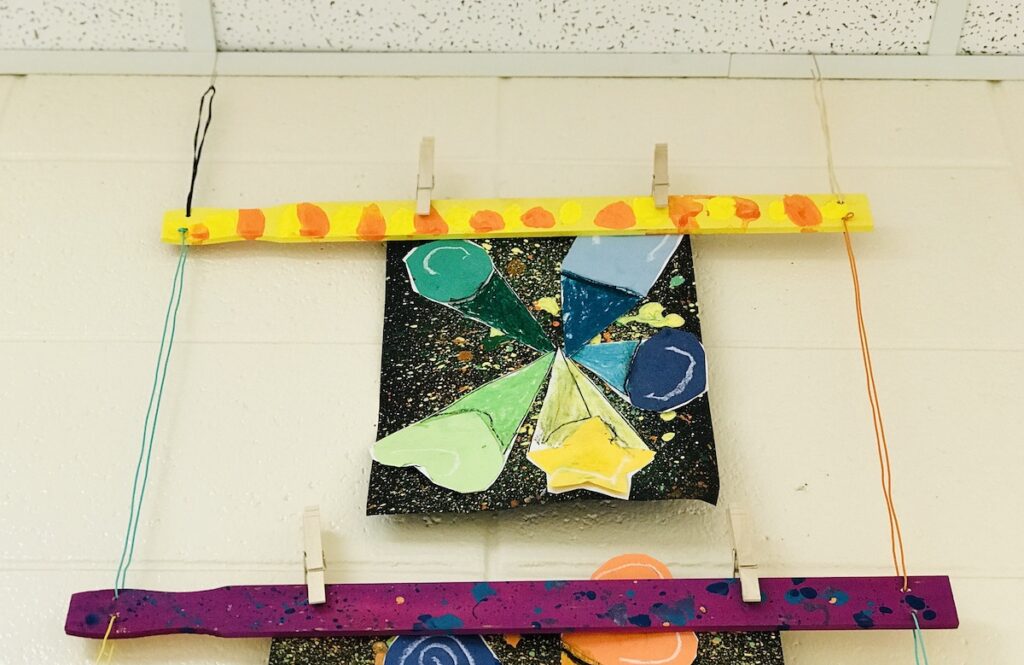
One of the very best parts of this hanging system is that it requires no tape or staples. Simply clip artwork onto the paint sticks with clothespins and bask in the magic of this speedy display. This unique, eye-catching arrangement will make students and visitors stop in their tracks, while also cutting down on your precious display time.
Pro Tip: Have your art club members paint the large wooden paint sticks. This can also be a fun, collaborative task to do with any grade level. Having your students be a part of the final display gives a sense of ownership and pride over this DIY display.
2. Hanging Messy Mats
There are so many beautiful things to do with messy mats. In our classroom, we used to use laminated tagboard messy mats and wipe them off at the end of art class. But, the layered paint and drawing tools that non-laminated mats produced are just too beautiful to pass up. Therefore, we switched our art room routine back to having students grab a thick piece of tagboard to use as a messy mat underneath a particularly messy process. In turn, we ended up with a plethora of colorful thick papers covered in artful marks.
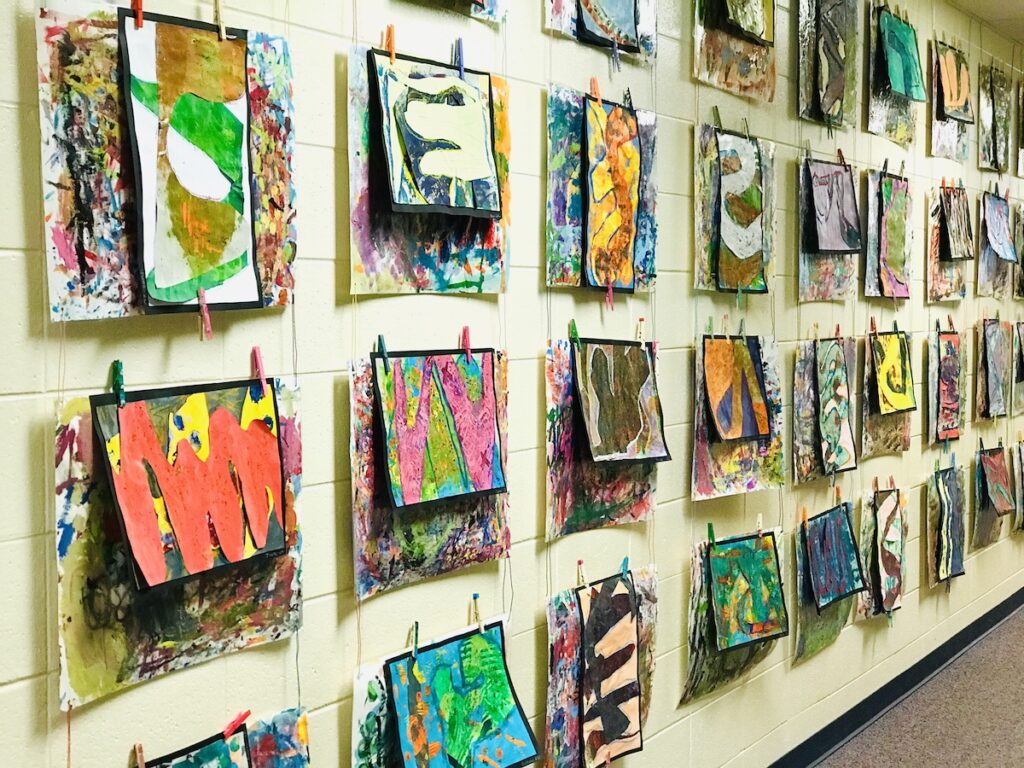
What you will need:
- Laminated messy mats
- Long paint sticks or dowels
- Wire
- Masking tape
- Hole punch
- Paper clips
- Clothespins
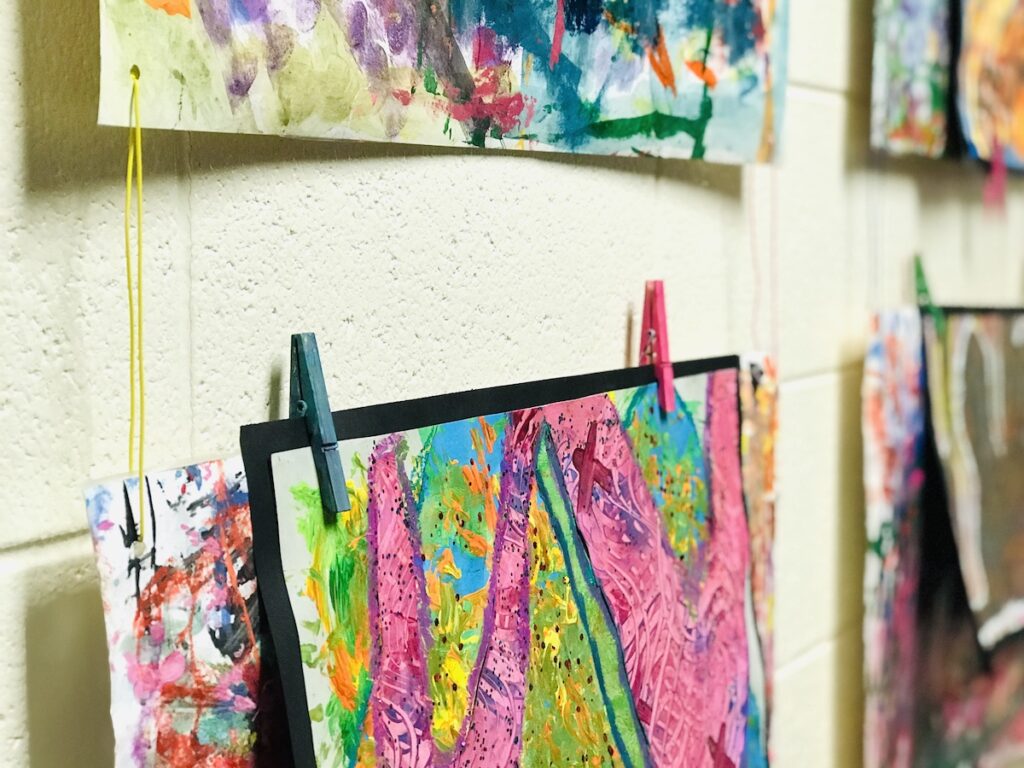
Do It Yourself:
To create this display, start by strengthening your messy mats. Glue dowels or large paint sticks to the top edge on the backside for a sturdy structure. Stick masking tape on the back corners and use a hole punch to punch through the masking tape and mat. Using wire or string, connect messy mats together and secure to a drop ceiling using large paper clips. Check out a similarly beautiful display here!
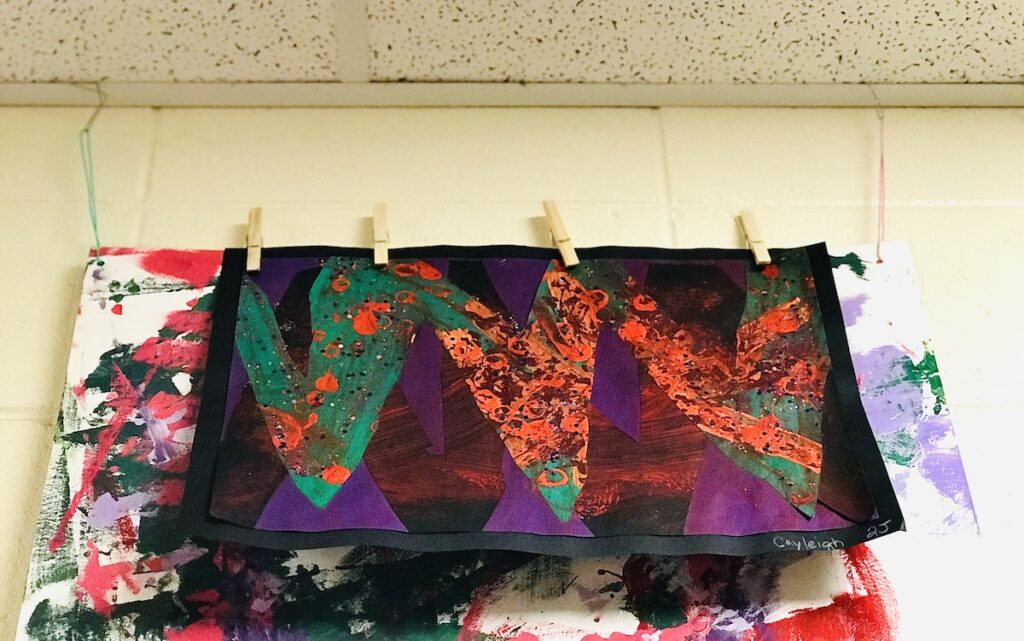
The best part about creating these displays is that they look awesome even when art is not displayed on them. That constant pressure to make sure every inch of school is covered in art is slightly alleviated. It’s also a great benefit for the beginning and end of the school year when your artists have not started creating yet, or you have sent everything home in art portfolios.
3. Clips and Hooks or Cork Strips
Large expanses of cinder block walls beg for large displays. However, simple displays like clips, hooks, and cork strips can be just as effective for covering large spaces. Take a step back and really look at the spaces in your school to decide what kind of display would best fit the space.
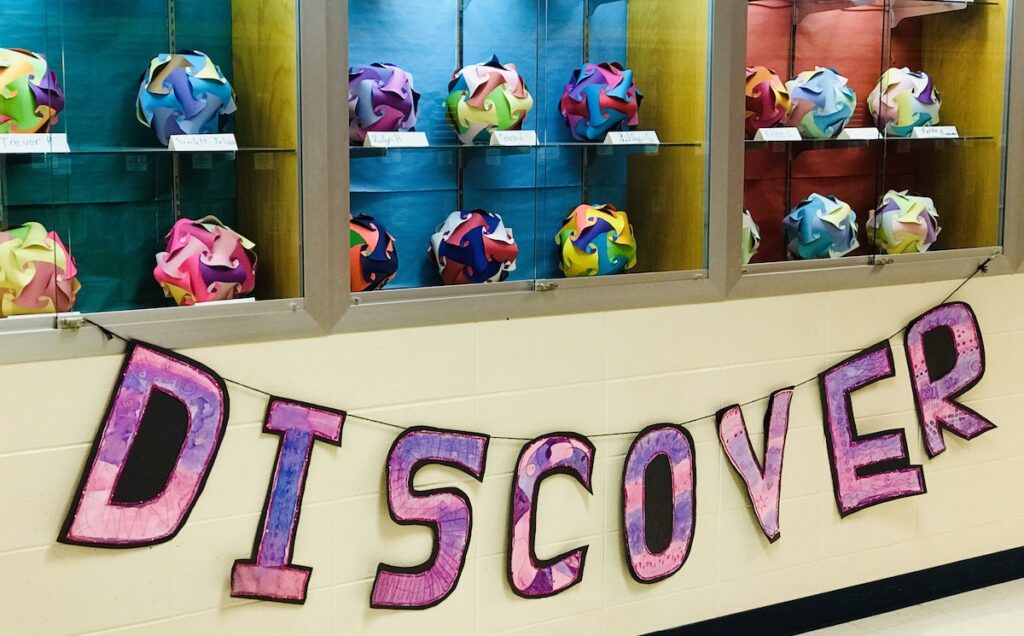
What you will need:
- Plastic hooks
- Clothespins
- Paper clips
- Cork strips
- Wall adhesive
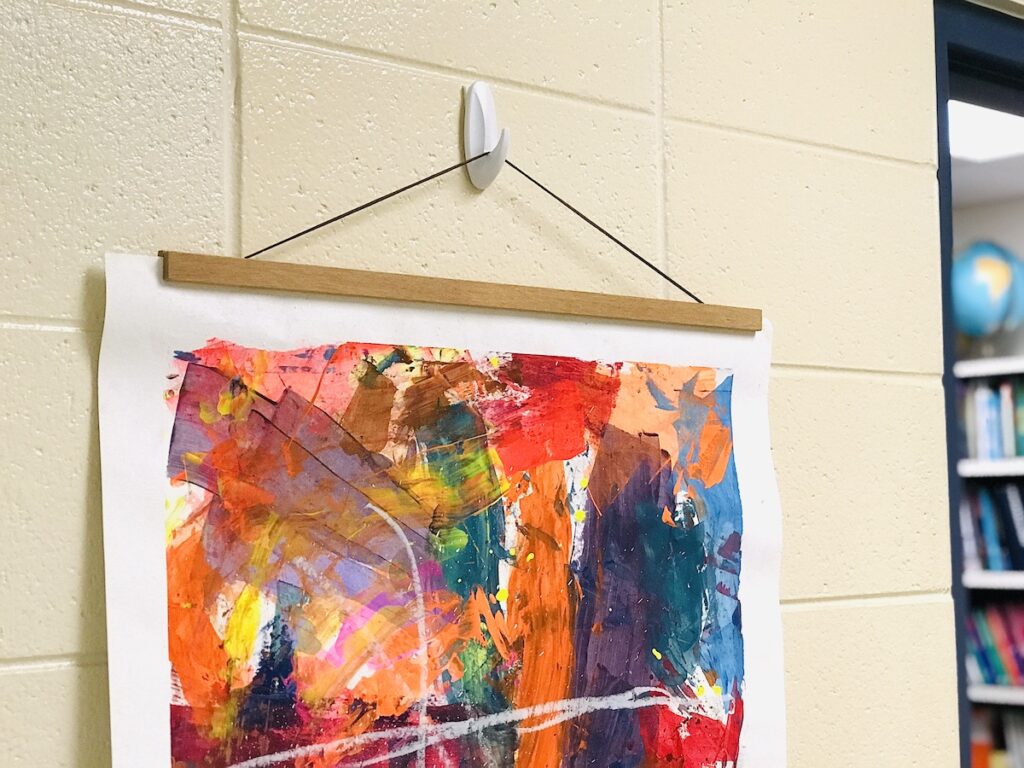
Do It Yourself:
Most hooks or cork strips are pretty self-explanatory. However, have you ever considered making your own? Your trusty clothespins will come in handy for this display as well. Attach wall adhesive to a collection of decorated clothespins and apply directly to cinder block walls. Try getting your hands on some long pieces of cork strips and attach them to cinder block walls, using push pins to display artwork.
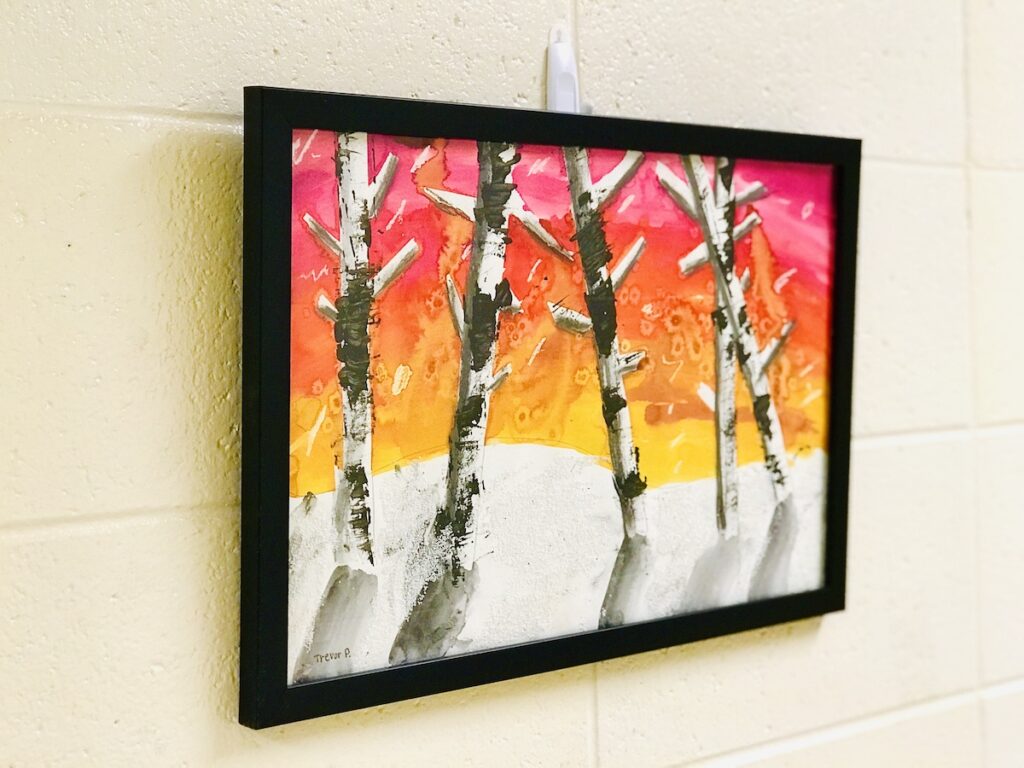
Using store-bought or DIY hooks are also perfect for displaying framed art from students. Check out how to start a rotating framed art gallery for your school.
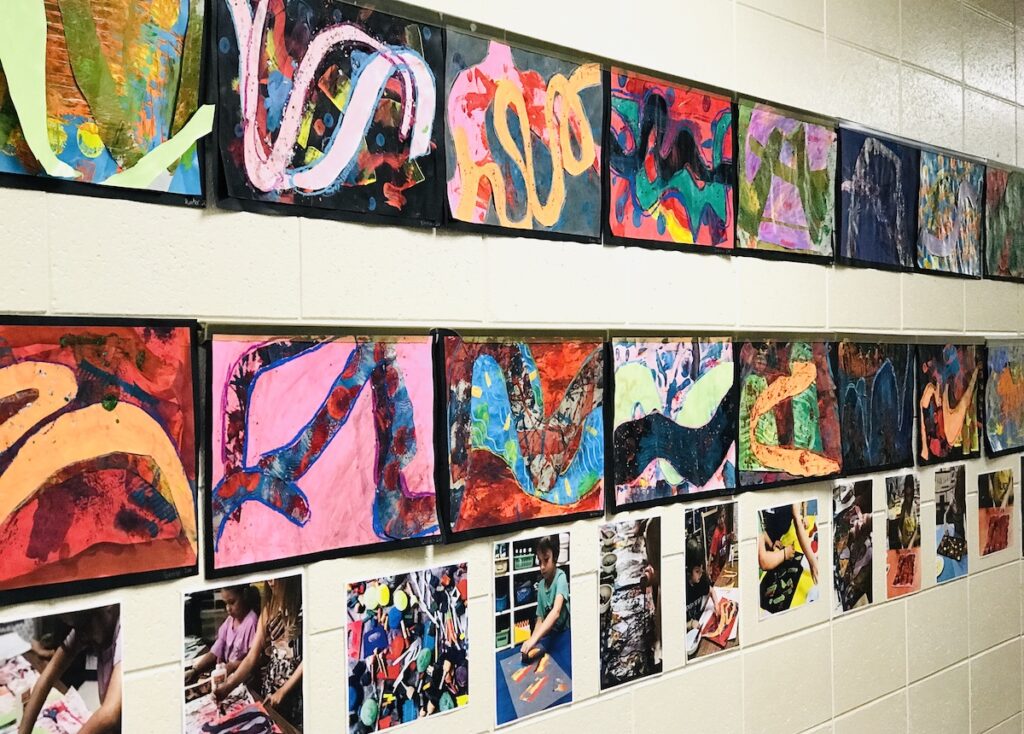
After exhausting your precious fingers by rolling copious amounts of masking tape and slamming in countless staples, using clothespins or push pins to attach artwork is a huge relief. Get your creative juices flowing and try creating some inventive ways to display artwork for your school. Check out these other ways to hang up artwork without losing your prep time.
Discovering ways to use non-traditional materials to display artwork can be half the fun of getting art up on the walls. Whether it’s clothespins or paint sticks—to an art teacher, it’s all fair game.
What non-traditional materials can you use to display art?
What is your favorite part of hanging art displays? What’s your least favorite?
How do you envision creating a DIY display for your space?
Magazine articles and podcasts are opinions of professional education contributors and do not necessarily represent the position of the Art of Education University (AOEU) or its academic offerings. Contributors use terms in the way they are most often talked about in the scope of their educational experiences.
